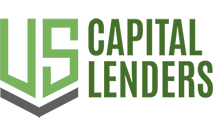Introduction
Interest rates play a pivotal role in the economy, influencing everything from consumer spending to investment decisions. For businesses, understanding how interest rates affect financing options is crucial for strategic planning and growth. This article explores the various ways interest rates impact business financing and offers insights into how companies can navigate these changes.
What Are Interest Rates?
Interest rates are the cost of borrowing money, typically expressed as a percentage of the loan amount. They represent the compensation that lenders receive for providing capital. There are two main types of interest rates:
- Fixed Interest Rates: These rates remain constant throughout the term of the loan, providing predictability in payments.
- Variable Interest Rates: These rates fluctuate based on market conditions, which can lead to lower or higher payments over time.
The Role of Central Banks
Central banks, such as the Federal Reserve in the United States and the European Central Bank in the Eurozone, play a significant role in setting interest rates. By adjusting the federal funds rate, central banks influence the cost of borrowing for banks, which in turn affects the interest rates offered to businesses and consumers. Central banks adjust interest rates to control inflation, stimulate economic growth, or stabilize the currency.
How Interest Rates Affect Business Financing
Interest rates directly impact the cost of borrowing for businesses. When interest rates are low, borrowing becomes more affordable, encouraging businesses to take loans for expansion, capital investment, and other growth initiatives. Conversely, high interest rates increase the cost of borrowing, which can lead businesses to delay or scale down their investment plans. The impact varies depending on whether a business is seeking short-term or long-term financing.
Interest Rates and Business Growth
Lower interest rates make it easier for businesses to invest in new projects, hire additional staff, and expand operations. This can lead to increased economic activity and growth. On the other hand, higher interest rates can slow down business growth as the cost of financing new projects becomes prohibitive, leading companies to be more cautious with their investments.
Interest Rates and Small Businesses
Small businesses are particularly sensitive to changes in interest rates. Unlike larger corporations, small businesses often have less access to capital and rely more heavily on loans to fund operations. Higher interest rates can make it difficult for small businesses to secure affordable financing, limiting their ability to grow or even maintain operations. During periods of low interest rates, small businesses are better positioned to access credit, which can be crucial for their development.
Impact on Different Types of Business Loans
Interest rates affect various types of business loans differently:
- Term Loans: These are loans with a set repayment schedule and interest rate. Fixed-rate term loans provide stability, while variable-rate loans may become more expensive with rising interest rates.
- Lines of Credit: Interest rates on lines of credit can vary, making them more expensive during periods of high rates. Businesses may face higher costs for revolving credit lines.
- SBA Loans: The Small Business Administration (SBA) offers loans with favorable terms, but interest rates can still fluctuate, impacting the overall cost.
Interest Rates and Business Valuation
Interest rates also influence business valuation by affecting the cost of capital. A lower cost of capital generally increases a company’s valuation, as it reduces the discount rate applied to future cash flows. Conversely, higher interest rates raise the cost of capital, leading to lower business valuations. This is a critical factor for businesses considering mergers, acquisitions, or attracting investors.
Strategies for Businesses to Manage Interest Rate Risks
To manage the risks associated with changing interest rates, businesses can adopt several strategies:
- Interest Rate Hedging: Businesses can use financial instruments such as interest rate swaps or options to lock in rates and reduce exposure to fluctuations.
- Diversification of Financing Sources: By diversifying the types of financing used (e.g., equity, bonds, loans), businesses can mitigate the impact of rising interest rates on any single source.
- Managing Debt Levels: Maintaining manageable debt levels allows businesses to be more flexible and resilient in the face of interest rate changes.
The Role of Economic Indicators
Economic indicators such as inflation, gross domestic product (GDP), and employment rates are closely linked to interest rate movements. For instance, high inflation typically leads to higher interest rates as central banks attempt to curb spending. Businesses must monitor these indicators to anticipate interest rate changes and adjust their financing strategies accordingly.
The Future of Business Financing Amid Changing Interest Rates
As interest rates continue to fluctuate, businesses must remain agile in their financing strategies. Emerging trends such as fintech innovations and alternative lending sources are providing new options for businesses to secure financing, even in a high-interest rate environment. Companies that proactively manage their debt and remain informed about economic conditions will be better positioned to thrive amid changing interest rates.
Conclusion
Understanding the impact of interest rates on business financing is essential for making informed decisions. By staying aware of how rates affect borrowing costs, business growth, and valuation, companies can develop strategies to navigate both rising and falling interest rates effectively. In a dynamic economic environment, businesses that adapt to interest rate changes are more likely to achieve sustainable growth and long-term success.
Sources
- Federal Reserve Board. (n.d.). Monetary Policy. Federal Reserve. Retrieved July 31, 2024.
- European Central Bank. (2024). Monetary Policy. European Central Bank. Retrieved July 31, 2024.
- Investopedia. (2024). Interest Rate. Investopedia. Retrieved July 31, 2024.
- U.S. Small Business Administration. (n.d.). SBA Loans. U.S. Small Business Administration. Retrieved July 31, 2024.
